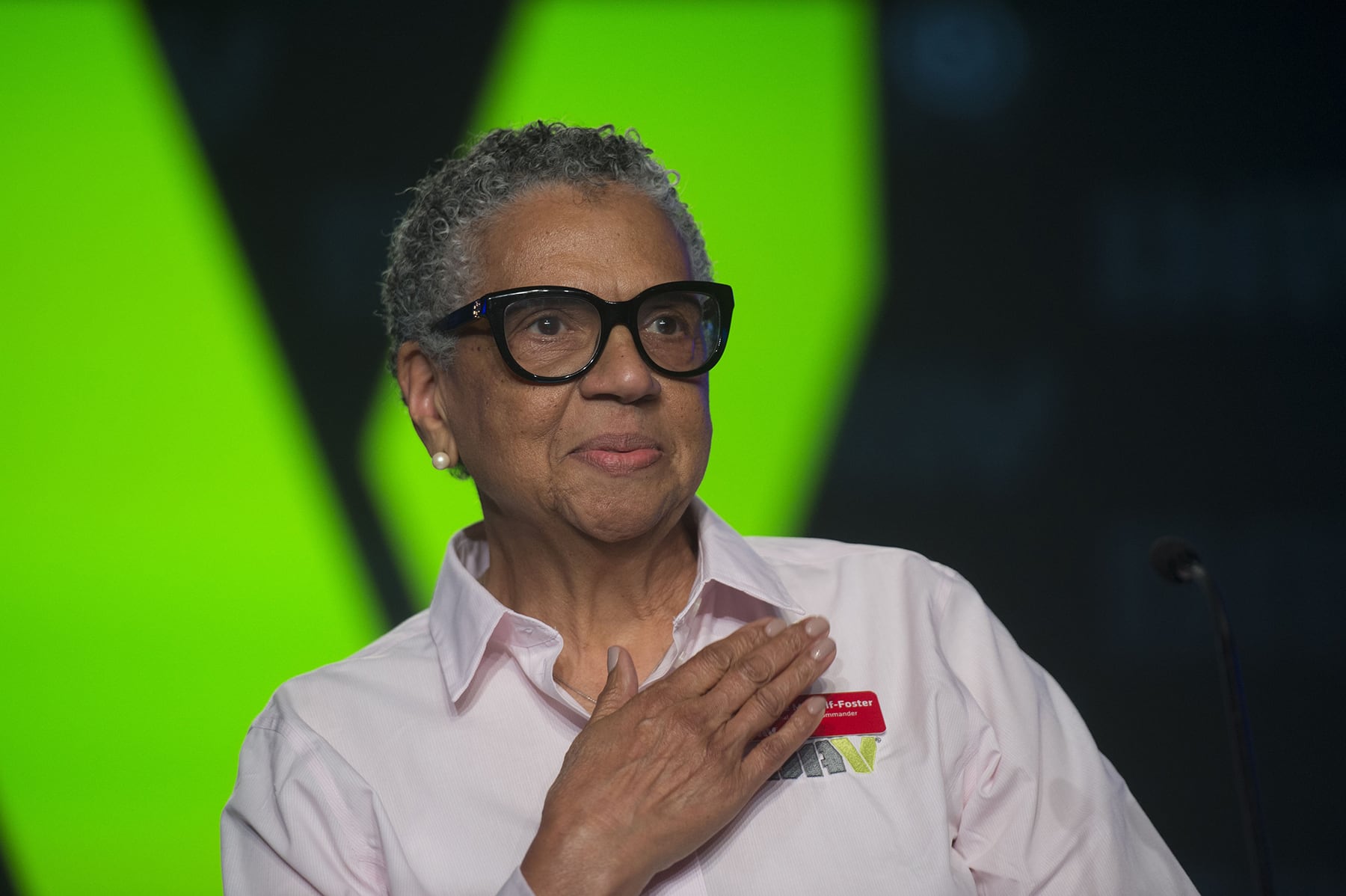Correction: This story has been updated to reflect that Vietnam Veterans of America had a female commander in the 1980s.
WASHINGTON — Nine years ago, when Army veteran Delphine Metcalf-Foster went to her local Veterans Affairs hospital for a knee replacement, she asked her doctors if they would use a female-specific prosthesis.
They said they never considered getting any.
“I realized then there needed to be more education,” she said. “Women don’t have the same bone structure as men. But they just always used a unisex knee. Maybe if (the injury) hadn’t happened to me, I would have just assumed that it wasn’t a problem.”
Now Metcalf-Foster is hoping to shine a bigger spotlight on those types of overlooked women veteran issues as the first female commander of Disabled American Veterans. She was sworn into the post on Aug. 1, becoming the first woman to lead one of the major American veterans organizations since 1991.
“I think it means a lot,” she said. “It means a lot to me personally, but it also means a lot to bring that new experience to the job. I have seen things that need to change, and unless we advocate for them, we cannot change them.”
The largest veterans organizations have long been seen as dominated by men, especially before the recent wars dramatically increased the number of women with military and combat service. Army vet Mary Stout served as commander of Vietnam Veterans of America from 1987 to 1991, but none have followed in the last 25 years.
But in recent years, that image has begun to change.
Three years ago, the American Legion named Army veteran Verna Jones the first female executive director in the organization’s century of operations. Earlier this year, officials at Iraq and Afghanistan Veterans of America promoted Army veteran Allison Jaslow to the same post. Army veteran Marsha Four has served as vice president of Vietnam Veterans of America since 2013.
In her inaugural speech as commander at last week’s DAV convention, Metcalf-Foster said that “I never wanted to be treated differently because of my gender” but also said she was proud to be given a platform to help highlight those issues.
“I was an older woman when I joined the Army,” she said. “It wasn’t easy. But I’d like to believe I came through with the same fighting spirit that my male counterparts had.”
She’s the daughter of a “Buffalo soldier” and entered the Army Reserve in 1975. A leg injury sustained while serving during the first Gulf War eventually forced her retirement, but also started her work on behalf of injured veterans.
Metcalf-Foster said her advocacy efforts have largely been met with support within the veterans community. “Usually it’s about awareness, and when our members learn there is a problem, they dive right in.”
“VA has gotten better with those services,” she said. “Years ago, when I went into group counseling, I was the only female there, and there wasn’t any other option.
“We’ve seen them make improvements, but more needs to be done. The suicide rate among women veterans is even higher than men. There are still problems with OB-GYN services.”
But she hopes that advocacy work won’t overshadow DAV’s broader slate of priorities. For the upcoming year, the group will also focusing on access to VA health care, department funding issues, expansion of caregiver support, and improving the benefits appeals process.
“I never saw myself as a female soldier,” she said. “The same about race. When I signed my papers for the military, it was just to be a soldier.
“I never felt I was any different than any other member of my team, and that’s still true today.”
Leo covers Congress, Veterans Affairs and the White House for Military Times. He has covered Washington, D.C. since 2004, focusing on military personnel and veterans policies. His work has earned numerous honors, including a 2009 Polk award, a 2010 National Headliner Award, the IAVA Leadership in Journalism award and the VFW News Media award.





